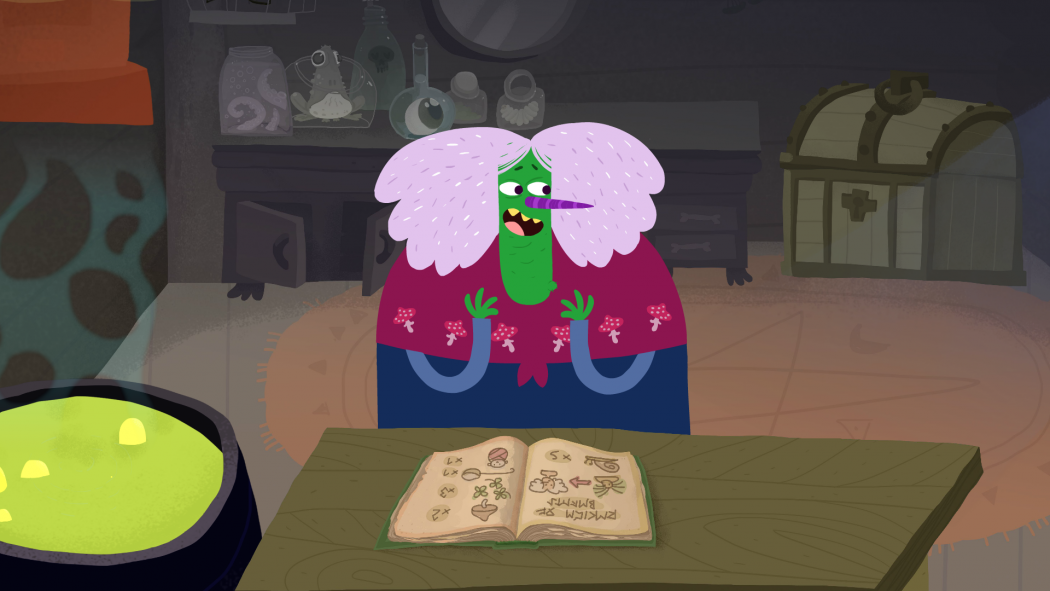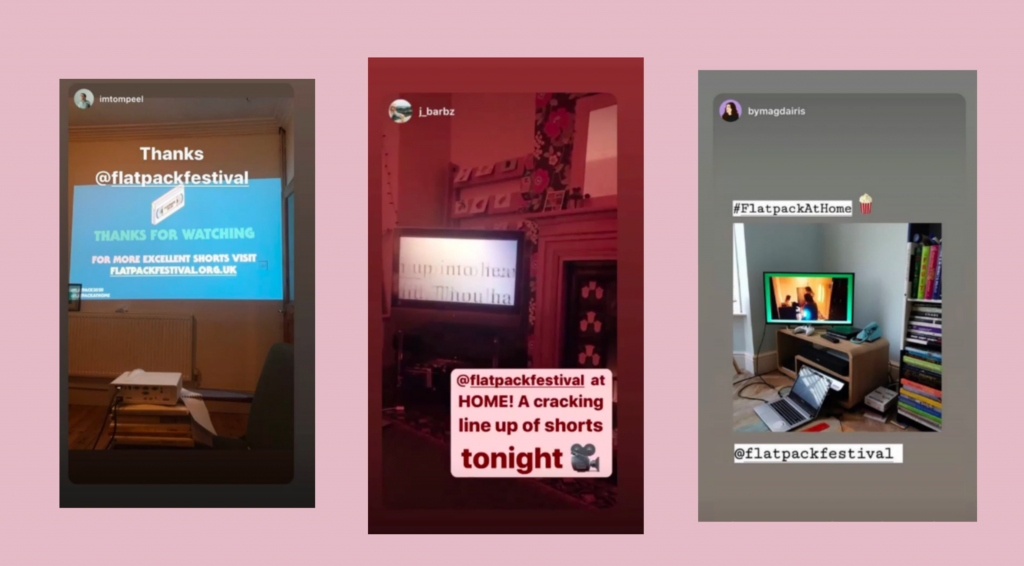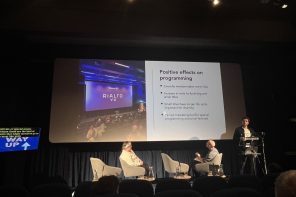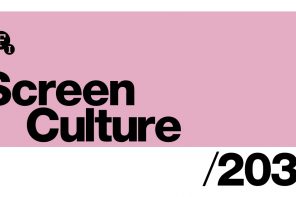With many film festivals having to re-think about how to operate during the coronavirus pandemic, Flatpack Festival programme assistant Max Harding and partnerships manager Amy Smart talk about how the theatrical event has become a home entertainment version.
With cinemas closed and social distancing measures in place due to COVID-19, it became clear that Flatpack Festival was not going to take place in its usual form, so after a swift rethink we decided to take the festival online. Sifting through the hundred plus events we had planned, it was clear that many of them just wouldn’t work digitally so we picked out the bits that would and set to work on delivering our first ever virtual festival.
Solving the tech
The first hurdle was logistics – how do we share content with audiences and what platforms work best? We decided to host a number of our short film programmes on our website via Vimeo embeds, which was quite simple, but for a couple of special events we weren’t hosting on our site, the plan was to go live. For this, we looked into a few different options.
Vimeo was our top choice, with the capacity for live graphics, Q&As and audience polls. However, it would have set us back a cool £840 for the pleasure. This paywall ruled it out as an option, which was beyond our budget.
Kast and Twitch both offer similar services. With the ability to share your screen and pause/play something at the same time, they’re great for ‘watch parties’ through streaming services, but didn’t offer exactly the type of streaming we were after.
One of the main issues we encountered with software like Kast, Twitch and Discord (another similar programme) is that our viewers would need to sign up. On Kast and Discord you need to sign up to view, and on Twitch you need an account to join the chat, and in order to recreate the feel of a post-show discussion the chat was important to us. We decided to investigate YouTube and Facebook, as we figured they were the accounts most people would have access to.
After deciding what we were after, it was a matter of sorting out the tech. To livestream a file rather than using a camera feed, the video has to be run through an encoder (a bit of research led us to OBS as the best option for this). The only issue was that every time we fired it up to test our livestream, the computer running it (a fairly powerful iMac) crashed almost immediately. The only time it didn’t was when we streamed the films at 240p and 12 frames per second, which needless to say didn’t look very impressive.
Because of this we settled on YouTube’s ‘Premier’ feature. It isn’t a livestream in the strictest sense, as the video (films, title cards and intros edited into one file) is uploaded beforehand, but it creates a time and a ‘place’ to be in order watch the films with each other, creating a shared experience. Viewers can pause and rewind, but not fast-forward past where the play-through is at. After the screening we took down the video making it unavailable for a rewatch, so although not technically a livestream it did the job for our ‘live’ events (Colour Box for kids and our prestigious Awards). Despite a few requests from filmmakers we also decided against geoblocking as we wanted this festival to be as accessible as possible with no barriers (read our recent blog post on how we worked with Sense to make the online edition more inclusive). That also meant it was free of charge and we couldn’t have done that without the support of our core funders; even if we had charged a fee to viewers I’m not sure the returns would have been substantial. However, it’s worth noting that we have raised over £1,500 in donations, memberships and merch sales over the past month.
Reaching audiences
Once the tech was all sorted our focus shifted to reaching audiences. Each year the festival attracts around 14,000 punters, but with digital content proliferating as the lockdown took hold, our expectations for the home edition were much lower.
One of the few advantages of lockdown was having a bit more time to spend on social media, with each member of the team taking a daily shift to tweet and share content. As well as connecting with regular followers of the festival we gained hundreds of new ones, both locally and internationally. To top it all off, final audience figures for our home edition weren’t wildly different to what we would usually expect, with just over 10k across YouTube and Vimeo.
Approximately 720 of those were for our live stream events, including the glitzy awards where we encouraged audiences to don their finest for a virtual red carpet, which definitely helped to create a sense of occasion and togetherness. Our analytics showed that 50% of people watched with others averaging out at 1.2 additional people per household (and bumping the audience figures up to an estimated 11,152). Another fun fact – 68% of viewers were UK based and 32% were international, coming from 57 different countries. We had people join us from 6 of the 7 continents (sadly no one in Antarctica was able to join us) and between them they racked up a whopping 19 days and 15 hours worth of film-watching!
Going online was definitely worth the hard slog – technical glitches, rights wrangling and the endless hours on social media fade away when reading our lovely audience feedback; ‘this is really helping with a bit of normal’, ‘love this level of adaptation in the current climate, well done Flatpack team’.
Ultimately we were able to bring people together and share some amazing films – and isn’t that really what it’s all about?
Follow Flatpack Festival on Twitter at @Flatpack and Max Harding and Amy Smart at @maximharding and @AmySmart__







